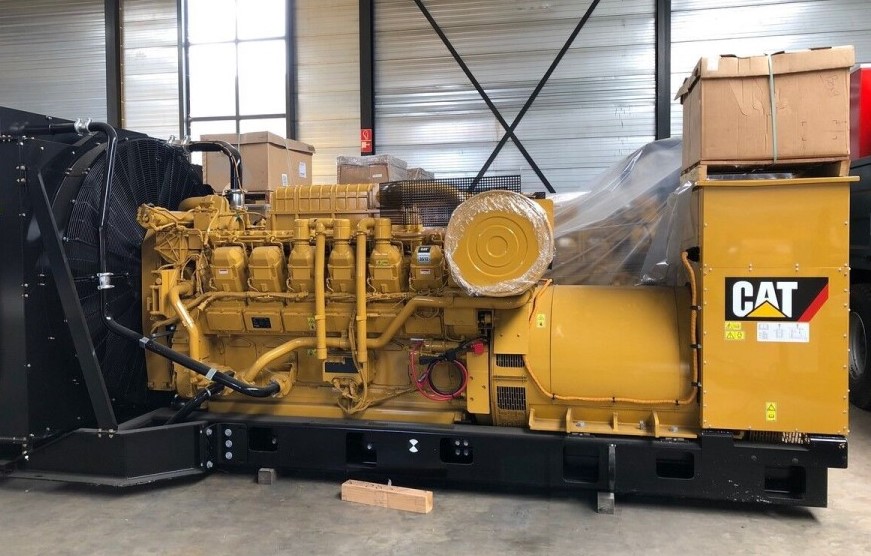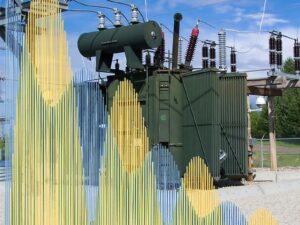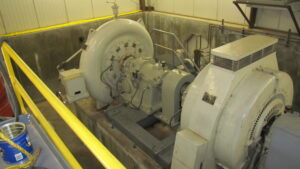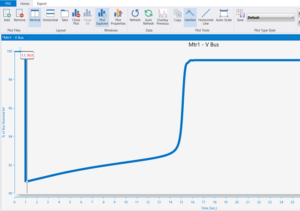Introduction
A common practice is to ground all types of generators through some form of external impedance.
The purpose of this grounding is:
- to limit the mechanical stresses and fault damage in the machine
- to limit transient voltages during faults
- to provide a means for detecting ground faults within the machine.
IEEE Std C37.101-1993 and IEEE Std C62.92-1989 provide a complete discussion of all grounding and ground protection methods.
Below are the most commonly used grounding methods for industrial generator grounding:
- High Resistance Grounding
- Low Resistance Grounding
- Reactance Grounding
- Grounding Transformer Grounding
Solid Grounding
Solid grounding of a generator neutral is not generally used. This practice can result in high mechanical stresses and excessive fault damage in the machine.
According to ANSI C50.13-1989, the maximum stresses that a generator is normally designed to withstand are associated with the currents of a three-phase fault at the machine terminals.
Most synchronous generators have relatively low zero-sequence impedance inherent. Hence, a solid L-G fault at the machine terminals produces winding currents that are higher than currents for 3-Phase fault.
Therefore, to comply with ANSI C50.13-1989, generators should be grounded so that the maximum phase-to-ground fault current is limited to a magnitude equal to, or less than, the three-phase fault current.
Generators are not often operated ungrounded. While this approach greatly limits the phase-to-ground fault currents and consequently limits damage to the machine, it can produce high transient over voltages during faults and also makes it difficult to locate the fault.
High Resistance Grounding
In high-resistance grounding, a distribution transformer is connected between the generator neutral and ground. A resistor is connected across the secondary.
The primary voltage rating of the distribution transformer is usually equal to or greater than rated generator line-to-neutral voltage. However, the secondary winding rating is 120 V or 240 V.
Selection of Resistor
The secondary resistor is selected so that, for a single phase-to-ground fault at the generator terminals, the power dissipated in the resistor is equal to or greater than three times the zero-sequence capacitive kilo-voltampere to ground of the generator windings and of all other equipment that may be connected to the machine terminals.
The calculation for sizing the resistor R utilizes the phase-to-ground capacitance “Xco” in the generator, bus, cable, transformers, and surge device. The resistor is sized to be:

Because the resistor is in parallel with the distributed capacitance, the total zero-sequence current is greater than the capacitive charging current.
With this resistor rating, the transient over-voltages during faults are kept to safe values.
For a single phase-to-ground fault at the machine terminals, the primary fault current is limited to a value in the range of about 3-25 A.
The ground-fault current level should be chosen to coordinate with the primary fuses of wye-wye-connected VTs with grounded neutrals.
Distribution transformers with internal fuses or circuit breakers should not be used.
The resistor size is selected to limit ground-fault current to the range of 5A to 10A.
While this method of grounding is used in Europe, the physical size of the resistors, the required resistor insulation level, and the cost may preclude the use of this method.
High-resistance grounding does not provide sufficient current for selective ground relaying of several machines connected to a common bus.
Consequently, it is generally used with unit-system installations where a single generator is connected through its individual primary grounded wye/secondary delta step-up transformer (or transformers) to the system.
This type of grounding has been used when two or more generators are connected to one step-up transformer.
However, with such a system, coordinating ground- fault protection is difficult, and shutting down all machines may be required to isolate a fault.
Low Resistance Grounding
In low-resistance grounding, a resistor is connected directly between the generator neutral and ground.
The resistor is selected to provide sufficient current for selective ground relaying of several machines or feeders, or both.
The grounding resistor is selected to limit the generator’s contribution to a L-G fault at the generator’s terminals in the range of 200-400 A.
Resistor cost and size usually preclude the use of resistors to limit the current below 200 A or to permit currents above machine-rated current.
Low-resistance grounding is generally used where two or more generators are bussed at generator voltage and connected to a system through one step-up transformer or where the generator is connected directly to a distribution system having a low-impedance-grounding source on the generator bus.
The disadvantage of this method is that these values of ground fault current may cause serious generator stator iron damage.
Reactance Grounding
Reactance grounding uses an inductive reactance between the generator neutral and ground. The inductive reactance is selected to produce an X0/X1 ratio at the machine terminals in the range of 1-10.
A common practice is to maintain an effectively grounded system by keeping the X0/X1 ratio at 3 or less.
This method produces relatively high levels of phase-to-ground fault currents ranging from approximately 25-100% of the 3-phase fault current.
Reactance grounding is generally used where the generator is connected directly to a solidly grounded distribution system.
Grounding Transformer Grounding
Grounding-transformer grounding involves the use of a grounding transformer connected to the machine terminals or to the generator bus.
The grounding may be provided by a zigzag transformer, by a grounded wye-delta transformer, or by a grounded wye-broken-delta transformer with a resistor connected across a corner of the broken delta.
When a zigzag or a grounded wye-delta transformer is used, the effective grounding impedance is selected to provide sufficient current for selective ground relaying.
The grounded wye-broken-delta transformer with a resistance in the corner of the broken delta is generally a high-resistance-grounded system.
The resistance would be selected in the same manner as for the distribution transformer with secondary resistor.
This method limits the single phase-to-ground fault current to a range of 3 primary A to 25 primary A.
A zigzag or grounded wye-delta transformer may be used as an alternate grounding source. This can be used when a generator with neutral reactor grounding is connected directly to a distribution system.
This approach can also be used where several ungrounded wye- or delta-connected generators are bussed at generator voltage.
A grounded wye-broken-delta transformer with a resistor across the corner of the broken delta provides a means for detecting ground faults in ungrounded wye- or delta-connected generators.







